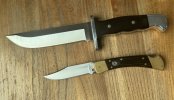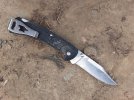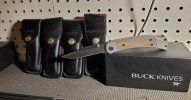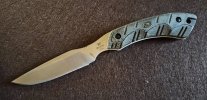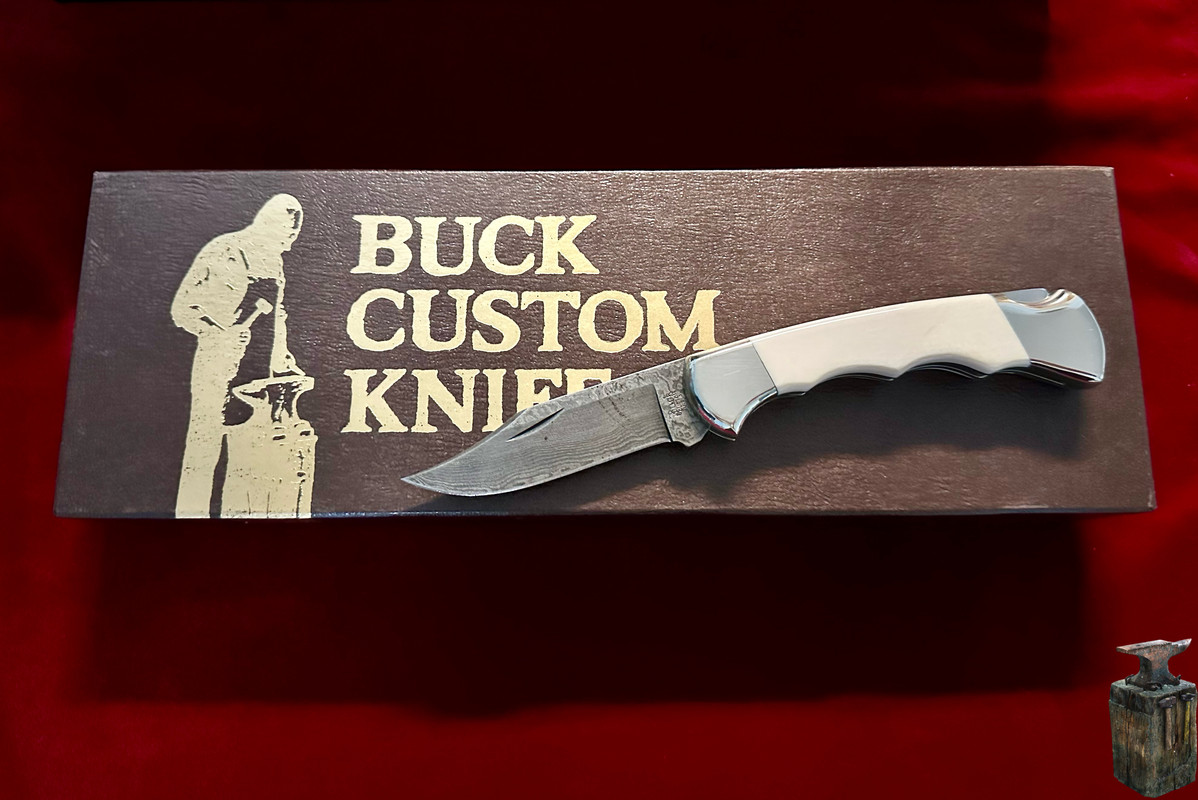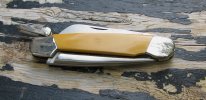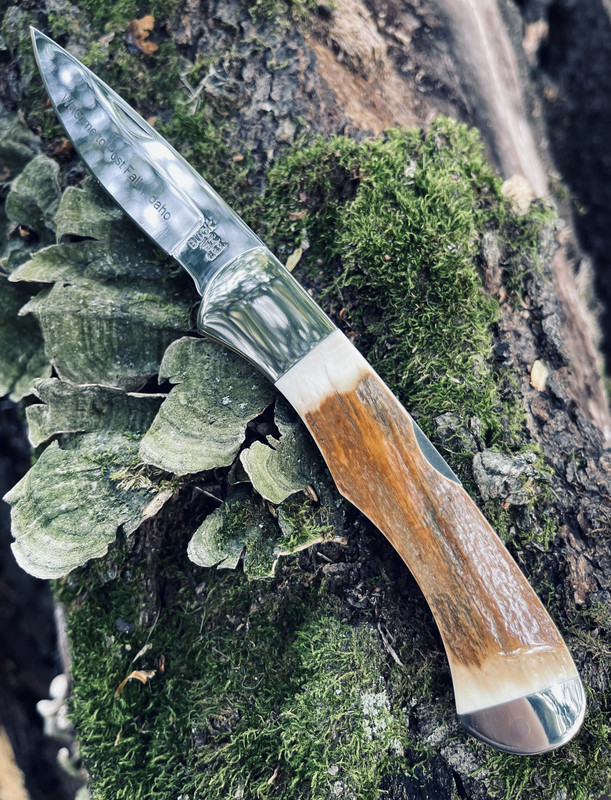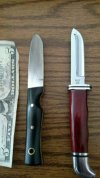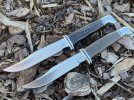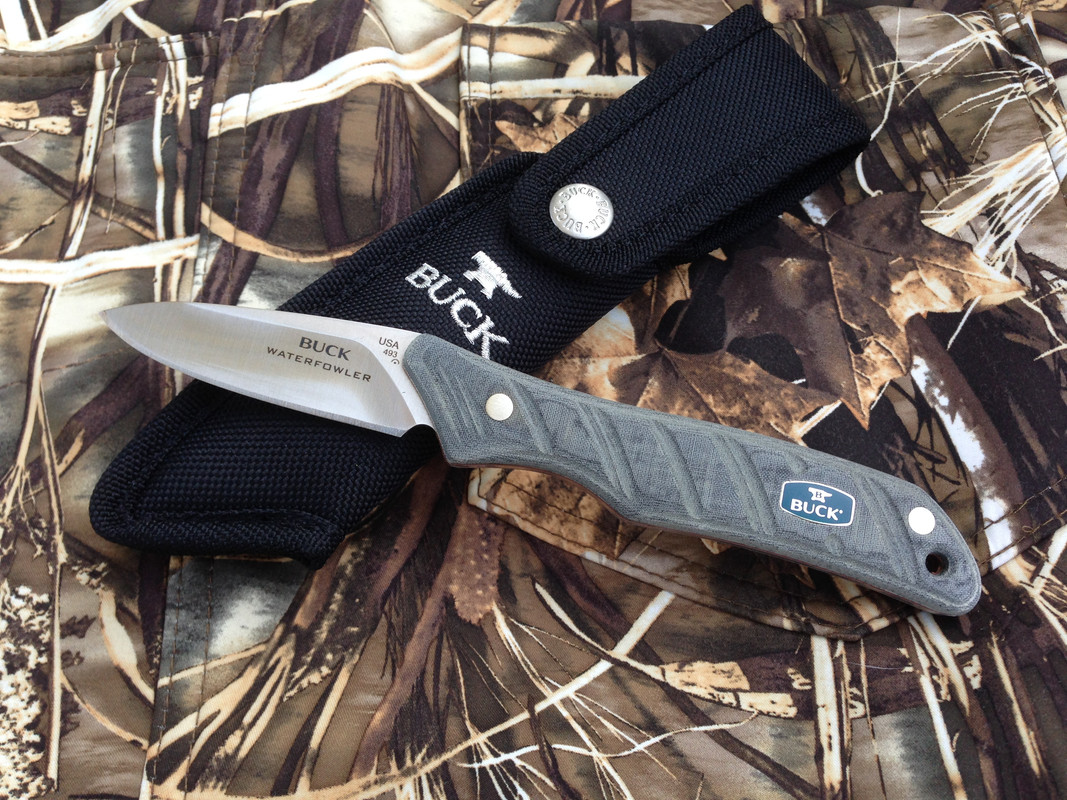DeSotoSky
Gold Member
- Joined
- Mar 21, 2011
- Messages
- 6,814
Hello and welcome to the Sunday Picture Show. Share your Buck knives with others by posting pictures of them here. New or old, plain or custom, user or safe queen, one or a collection, we love to see them all. This weekly tradition was started in 2010 by ItsTooEarly (Armand Hernandez) and Oregon (Steve Dunn). Help keep the tradition alive. Feel free to click that 'LIKE' but lets not let it replace discussing and complimenting each others knives. DeSotoSky (Roger Yost)
On this Day, September 8th, 1565 First permanent European settlement on the mainland US is founded at St. Augustine, Florida.
Emphasis on the word "permanent". (San Juan, Puerto Rico is oldest US city, founded in 1521). Note that the English colonized Jamestown in 1607 and Plymouth colony was 1620. I'm going to diverge to earlier incursions into Florida trying to bring St Augustine into context. Ponce de Leon is officially "credited " as the first European to set foot on the mainland of America in 1513 which he named La Florida (full of flowers). There is always a "but" in discoveries as there were most certainly traders, probably slavers, and Ponce de Leon himself reported encountering a native who spoke Spanish. Legend and myth has Ponce de Leon searching for the Fountain of Youth but I think the reality of it is the interest was in the search for gold and subjugating the natives into forced labor on plantations and in mines. Ponce de Leon did not mention the Fountain of Youth in any of his known writings. There is some suggestion that if he was searching for the fountain of youth, the location was Bimini, not Florida. The few things I read were conflicting. Ponce de Leon's plantations in Puerto Rico made him a wealthy man in the new world where he was a colonial governor for a short while. Ponce de Loeon unsuccessfully tried to establish a colony at Charlotte Harbor on the gulf coast in 1521 but was driven off and he died in Cuba of wounds received. Navarez explored the west (Gulf) coast in 1528 but his demands for food and gold were violent and met with resistance, unable to find his ships only a few members of the expedition of 600 survived. The Navarez Expedition was a total cluster F***, Wiki link below. It is not related to St Augustine but is an intriguing read. Next up, De Soto landed in Florida in 1539 and embarked on a multi year journey thru the southeast US searching for gold, found none and died in the attempt. Arellano established a settlement at present day Pensacola in 1559 but was wiped out by a hurricane and abandoned in 1561. Getting closer, in 1564 Ft Caroline was established at present day Jacksonville by protestants fleeing religious persecution in France. Finally we get back to 1565 when Pedro Menéndez de Avilés founded San Agustín (St. Augustine). He attacked and killed most of the French settlers at nearby Ft Caroline leaving St Augustine as the last man (or first man) standing as a permanent continuously occupied settlement. King Phillip II had considered the presence of a French colony on lands claimed by Spain to be a threat and ordered the action. Sorry, no cute pictures and I know this was a bit of rambling as my interest led me more to about attempts to colonize Florida than about St Augustine itself but here is a good link to the history of St. Augustine.
Our History | St. Augustine, FL
Explore St. Augustine's rich history, from its founding in 1565 as the oldest continuously occupied European and African-American settlement in the U.S., to its architectural heritage, military past, and pivotal role in the Civil Rights movement. Discover how this unique city evolved through...

Narváez expedition - Wikipedia
Buck has given the name Caping Knife to 7 different models over the years. This picture below shows 3 of them.
Three very differently shaped knives purposed to the same task.
***Top knife is the familiar 116, a nice 1-liner. It has been said that the first 116's were made from 118 blades(or was it 102's). I wonder if this could be one the early reshaped 118's by looking at the upsweep of the spine.
***The middle knife is the Model 294 done for Bass Pro c.1996 and is the rarest as only 101 were made. Big handle combined with a compact blade makes it my favorite.
***The bottom is the Alaskan Guide Caper model 474. The Special Projects list says 1,000 of these were made for Cabela's in 2008. I find it hard to believe there are that many out there as I have only ever seen 2 of them. Mine, and saw one in a local pawn shop.
Here is the full list of knives Buck referred to as Capers. Did I miss any?
116 Caper
135 Caper
294 Caper, LE for Bass Pro in 1996
474 Alaskan Guide Caper For Cabelas, 2008
477 Caper
670/671 Ergo Hunter Caping Knife
494 Harvest Series and Platinum Series (Dick's) Caping Knives
Last edited:

